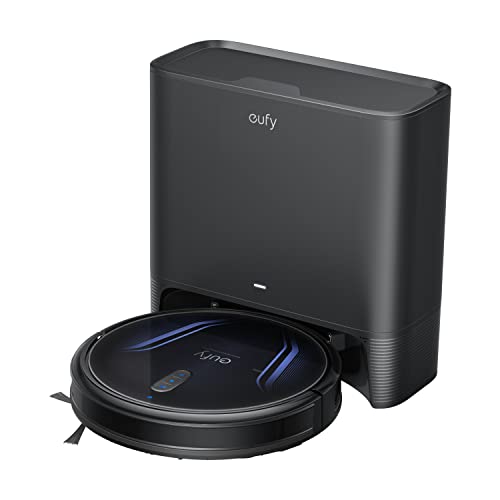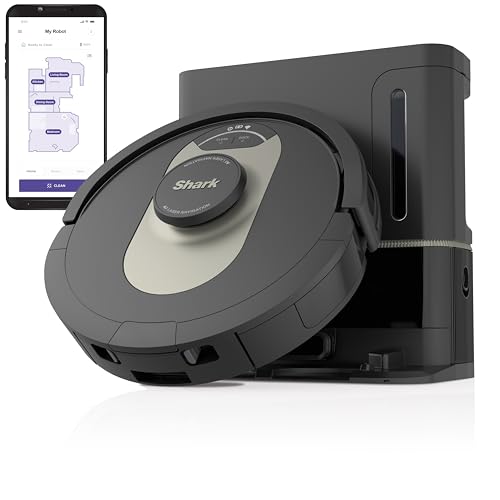bagless suction vacuums Self-Empting Robot Vacuum
The majority of robot vacuums are circular devices that often struggle to fit under furniture or around the legs of chairs. This problem is eliminated by using an automatic base that emptys its contents without needing bags.

They can be noisy when they move debris from the robot into the internal bag. This can be startling for people or pets who are nearby.
Features
The most appealing thing about a
bagless self-emptying robot vacuum is that it does exactly what it says on the tin: empty it. These models don't require you to haul an upright vacuum out of the cabinet and into action every few weeks, as many other robot vacuums do. Instead they automatically empty their internal dustbins into an enormous storage area in their charging station, eliminating the requirement for manual maintenance.
When the bag or internal compartment gets full the robovac will notify you and return to its base. You can manually take the bin and empty it over the trashcan. This can be messy, as dust will fly away and you'll save on bags that need to be replaced.
Most robotic vacuums will also make initial, non-cleaning rounds of your house to create a map. Different models use varying methods, like smart cameras or LIDAR (Light Detection And Ranging) to accomplish this and each has its own pros and cons. Maps can be customized within the vac's app to identify rooms or specify which areas you do not want cleaned, and also to set up automatic cleaning schedules.
During the mapping phase, robots will be able to detect any obstacles, like furniture or electrical wires and will avoid them. You can also instruct your vac to stay clear of certain objects, such as children's toys or cat litter.

All of the vacs we tested had powerful suction that can remove the majority of dirt debris, debris and pet hair from most flooring surfaces, but some may struggle with carpets or high-pile floors.
The majority of the vacuums that we test had app features that were impressive that made it easy to alter settings and view detailed metrics about its performance. Some are compatible with Amazon Alexa or Google Assistant so you can control them by voice. However there were some apps were the most difficult to use, particularly those that didn't offer clear and consistent instructions. Some were also prone to errors and glitches, but most of them were small and easy to correct.
Design
Many robot vacuums use bags that need to be changed periodically. Self-emptying models do not have this problem since it simply takes the dirt it collects to its charging dock once the vac is finished. This will prevent you from having to handle dust clumps, or release them in the air. This can be helpful in the case of allergies.
Depending on the size of the base these compartments can store between 45 and 60 days of debris, which will save you from having empty the robot each day. The vac will be alerted by its smart app when it detects that the base is full and you'll be able to choose to continue cleaning the area, stop it, or change the mode.
Aside from the obvious benefits of time-saving, a bagless self-emptying vac has additional advantages. It's usually lighter than a regular vacuum, making it easier to maneuver around furniture and in tight corners. It's also a lot quieter in operation and could be a great option if you live with others who aren't as enthused of the loud noise as you are.
Most smart robot vacs have various other features that make them useful for example, automatic/set run time, mapping capabilities, mop/vacuum switch features and more. Certain smart robot vacuums feature Wi-Fi and smart home integration. This is helpful if you wish to manage them remotely.
Certain models may be difficult for beginners to install. Some models rely on proprietary software, which can be difficult to install and use. Others require a separate hub to connect to your smart home.
It's your decision whether a robotic vacuum with self-emptying bags is worth the price. It's all about whether you're willing to pay a premium to have the convenience of not having to manually empty a heavy upright vacuum every couple of weeks.
A
self emptying robot vacuum bagless-emptying robot vacuum can be a fantastic investment for many households. However there are a few factors to take into consideration before buying the product. It is important to keep in mind that this technology could increase the cost by $100-$500 the price of a vacuum and you may have to buy bags to replace the base itself. The other major consideration is the fact that it can be quite noisy during the process of emptying itself, which could be a hassle.
Performance
The best self-emptying robotic vacuums have a built-in dirt bin that holds 45 to 60 days of debris without dispersing it into the air. The base returns to the vacuum when it is full and then connects automatically. The dirt is sucked up into the base canister, accompanied by an audible "whoosh". The process of emptying takes around a minute and the bot then resumes its cleaning schedule that it has programmed.
The top models also have advanced features that allow them to complete a thorough and effective clean. These technologies improve the bot's mapping abilities and prevent it from getting lost or trip over obstacles it encounters while it is on its way to an area of the house. A lot of
robot vacuum bagless self emptying vacuums utilize LIDAR (Light detection and Ranging which is a form of radar) or smart cameras to create maps of your home. The maps are saved in memory, allowing the robot to return to an area it has cleaned previously and continue where it was when it left.
A bot could also be programmed to clean a certain room or zone in your home automatically on every day. For instance, you can program the robot to clean the kitchen every morning before you return from work, or you can program it to clean the bathroom after each shower. Some models can be programmed to sweep or mop your house while you rest.
A self-emptying robotic vacuum is more expensive than a conventional model, but it's well worth the extra expense for anyone looking for a completely automatized floor maintenance system. If you are on an extremely tight budget or don't have enough space in your house for an area to set up a base, you might want to consider a traditional robot vacuum instead. Keep in mind that if you're going with bagged models, you'll still need to clean and replace the filter regularly. The majority of robot vacuums make noise when they transfer their debris from the canister into the base. This might not be the best choice for households with pets or small children.
Value
Robot vacuums are getting more powerful as technology advances. They are now with features that help to keep their vacuums clear of dirt and dust buildup, such as mapping capabilities, scheduling capabilities and attachments like side roller brushes. As a result, they are able to provide a valuable cleaning service to homeowners, particularly those with busy lifestyles who may not be able keep up with regular vacuuming.
Self-emptying bases are among of the most practical and useful features for robot vacuums. The models are able to store the debris in a larger compartment that automatically empties on a schedule determined by the manufacturer. The base usually only needs to be cleaned every 60 days or more, and you'll receive an alert on your smartphone app when it's the time. This could be a major selling factor for those who want to truly "set it and forget it" with regards to their robot vac.
Some buyers might find the cost of an automatic base that can be empty the tank to be prohibitive. Based on the model you pick the base can cost as much as $100 or more your purchase price. And even without a base, the prices of robot vacuums already tend to be higher than conventional vacuum cleaners.
How often you'll make use of the robot vacuum is another important aspect to consider. Most brands last approximately four years. This means that you can get an excellent return if you use your robot vacuum regularly.
The final decision to purchase a
bagless self-navigating vacuums self-emptying robot vacuum comes down to how much you value convenience and whether you're willing to spend money for it. If you're looking for a floor cleaning solution that you can set and forget then the iRobot J7+ is the ideal choice. It performed the best in our tests, employing advanced mapping to clean your home methodically and avoid obstacles as it moves. But if you're willing to go with a cheaper model, the Shark IQ XL does the job similarly and is a lot less expensive.



